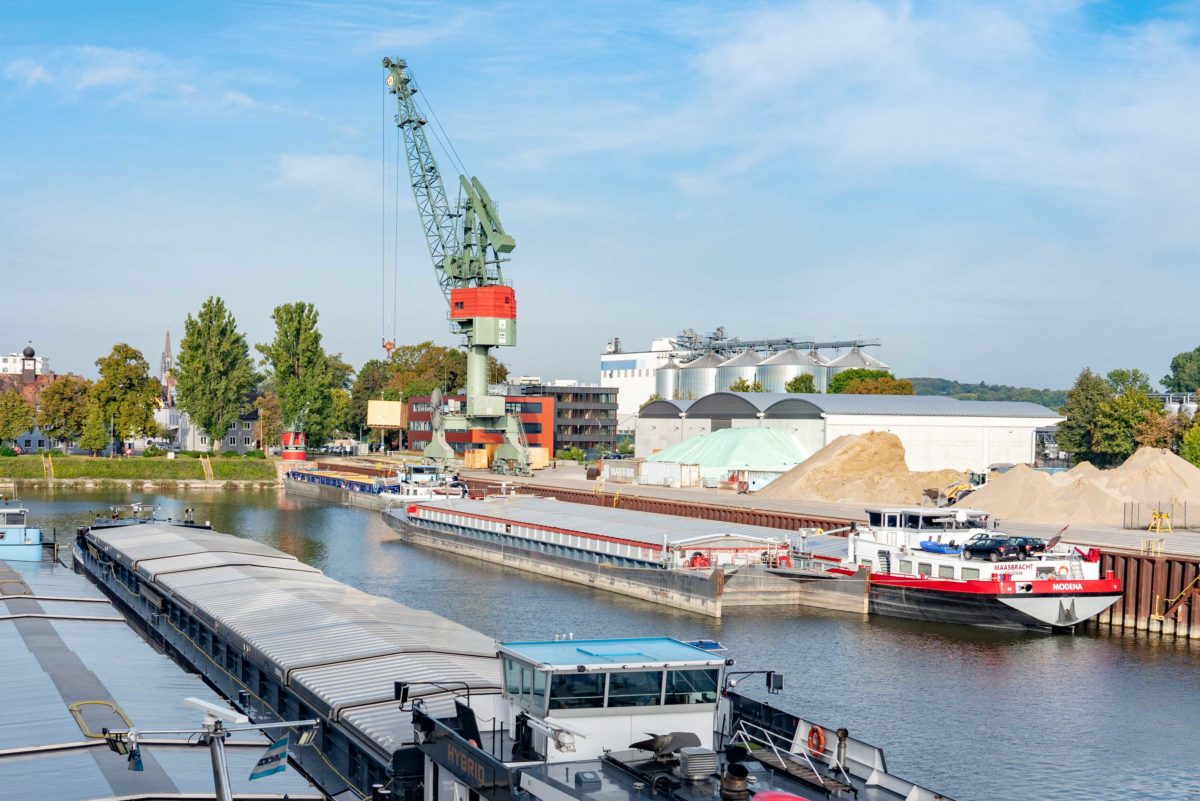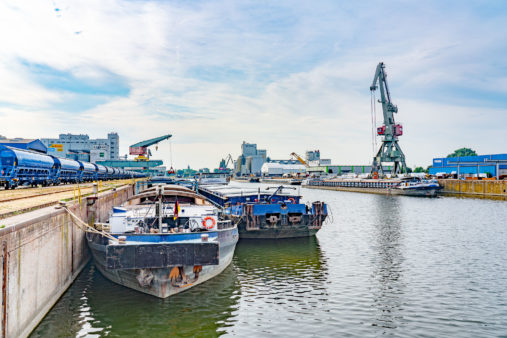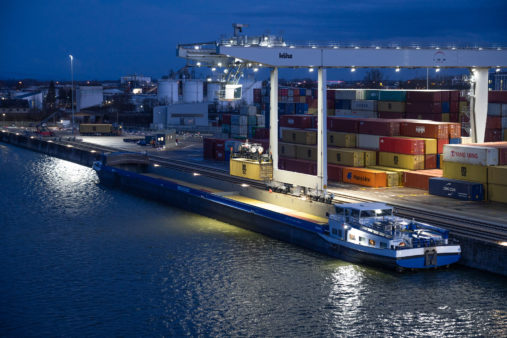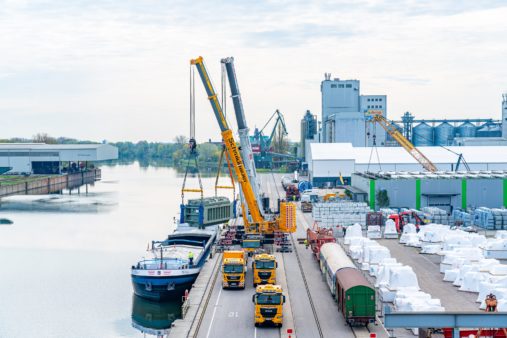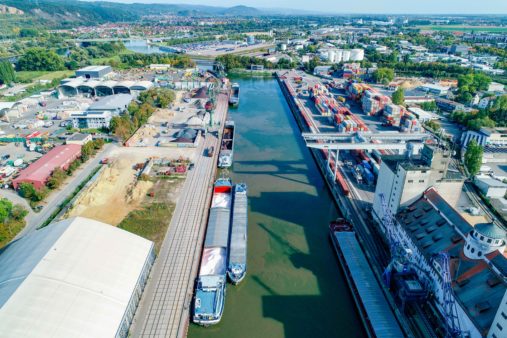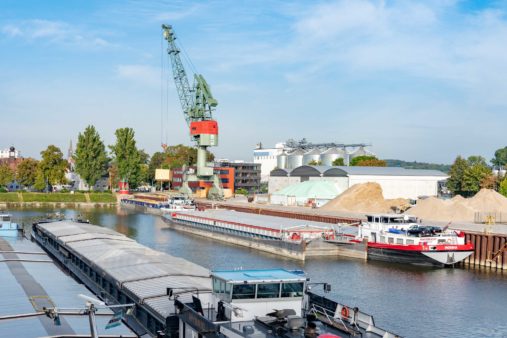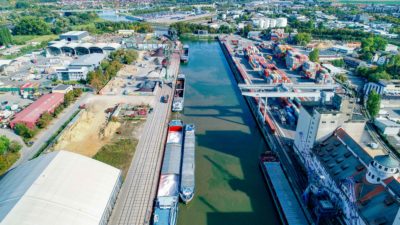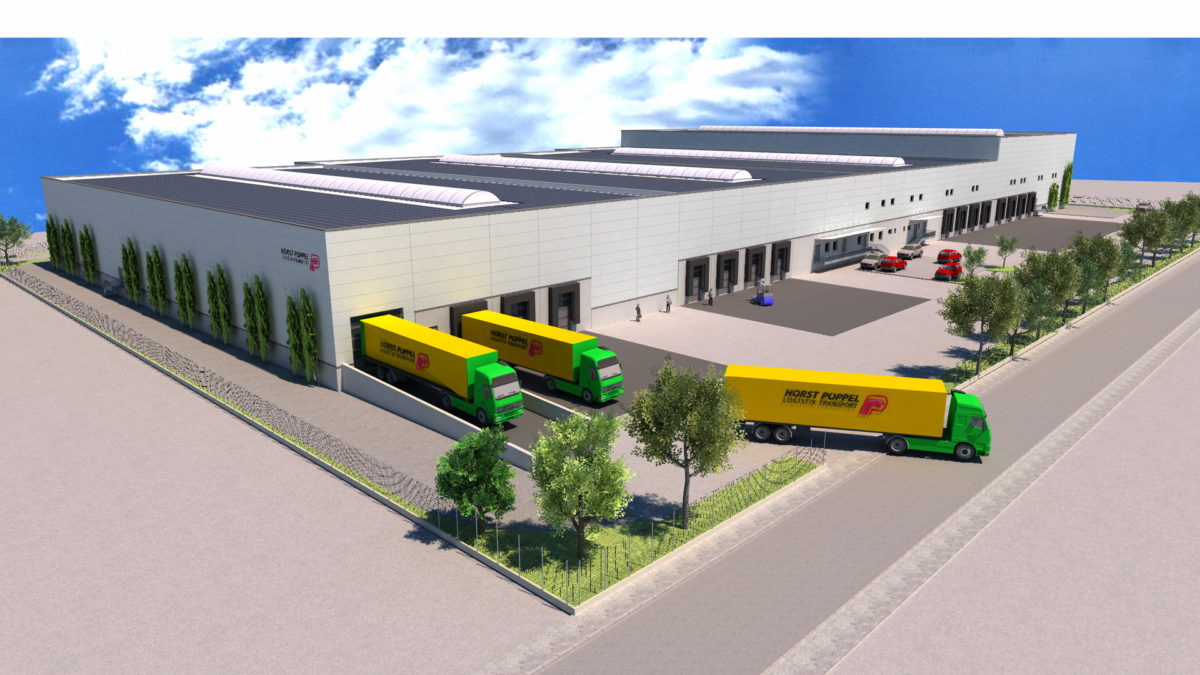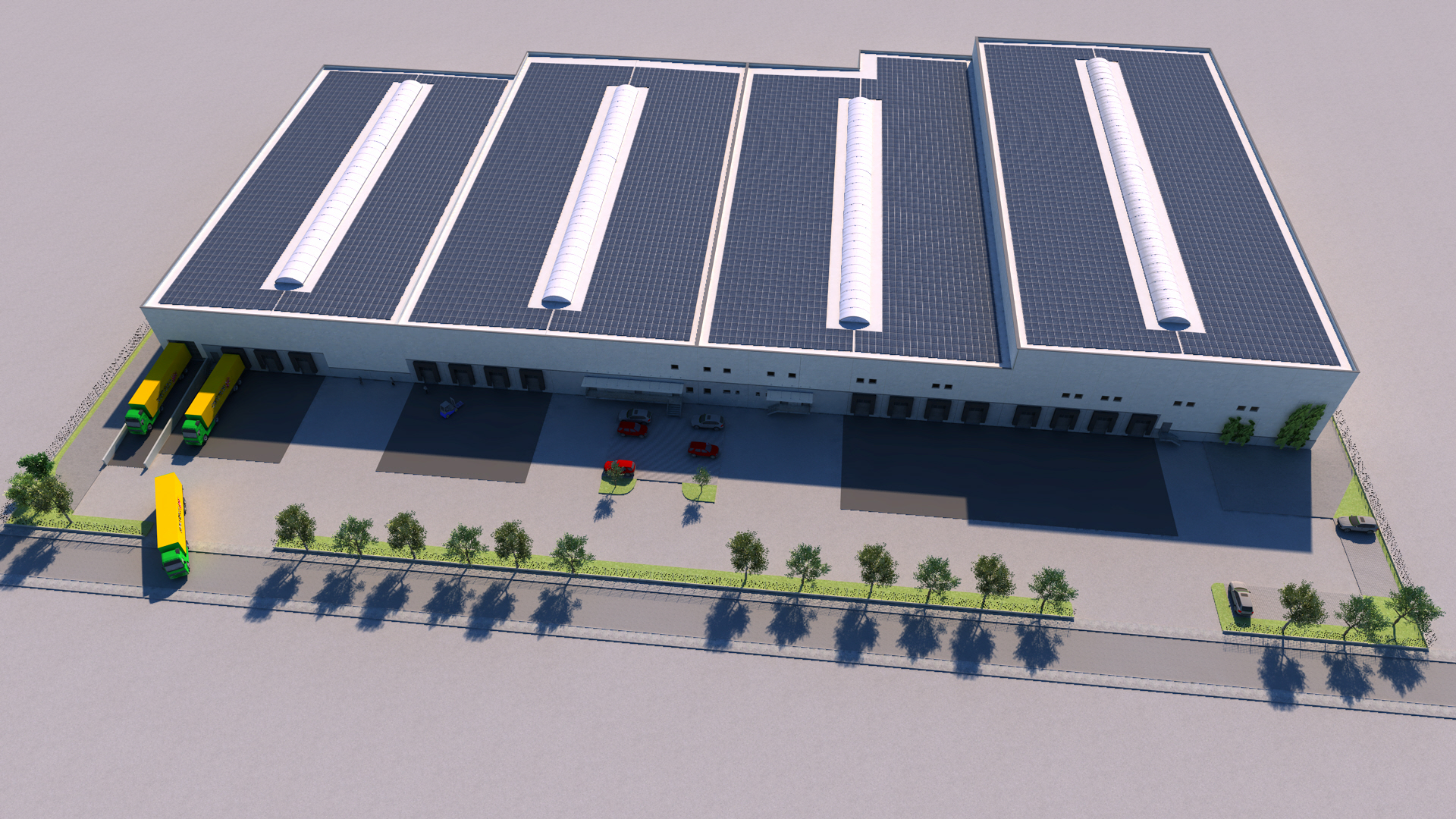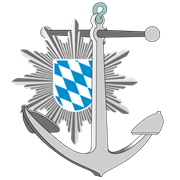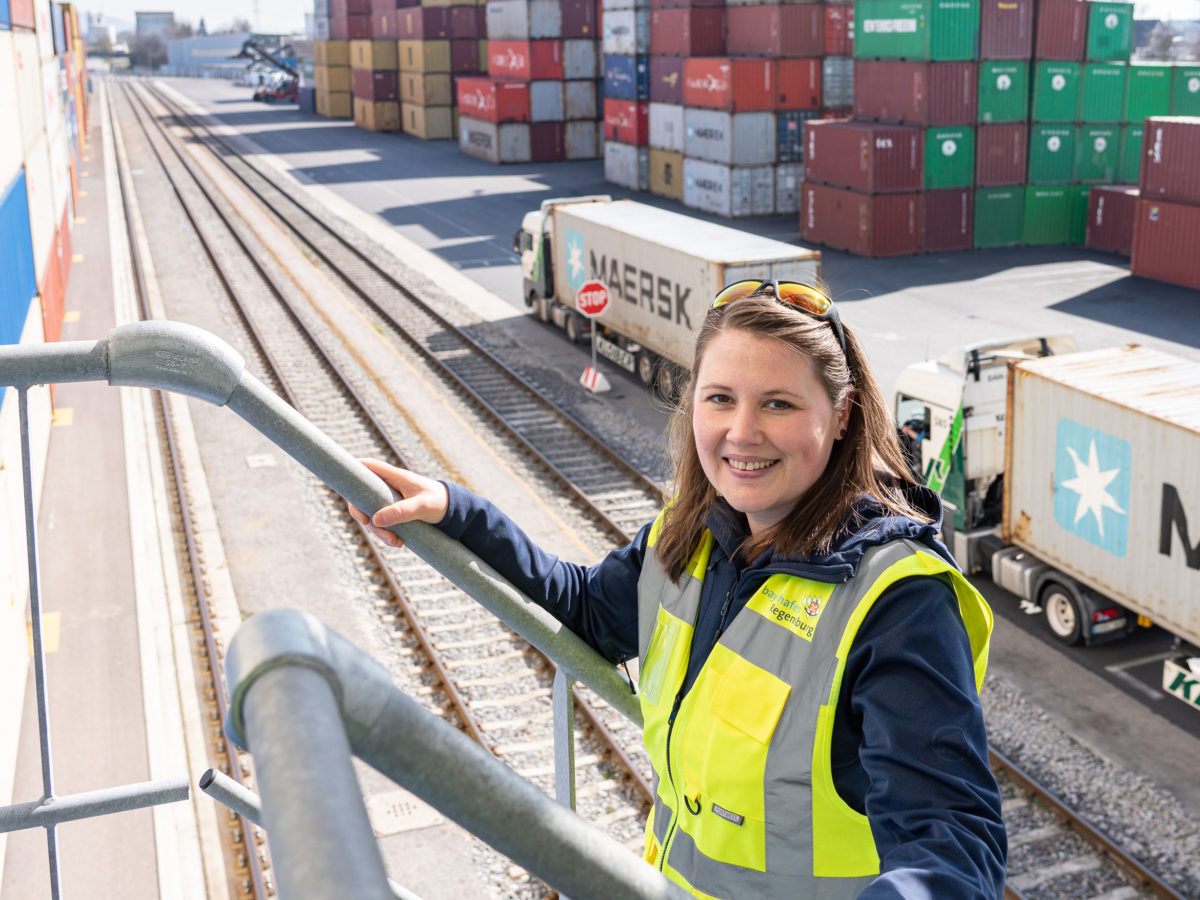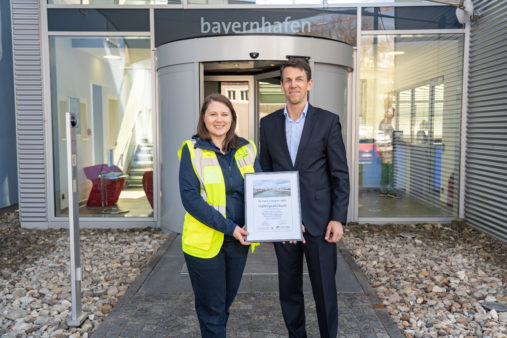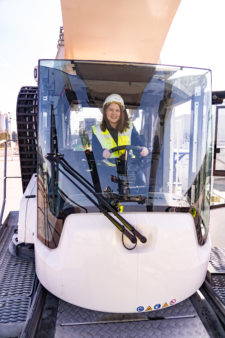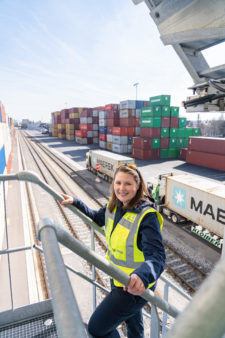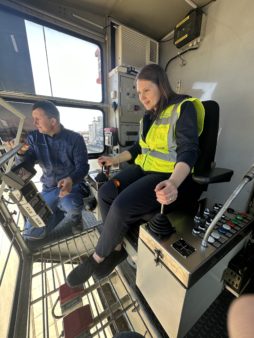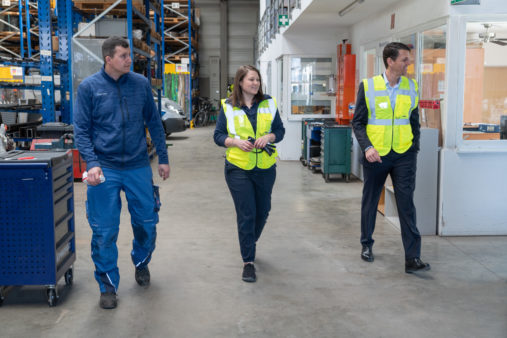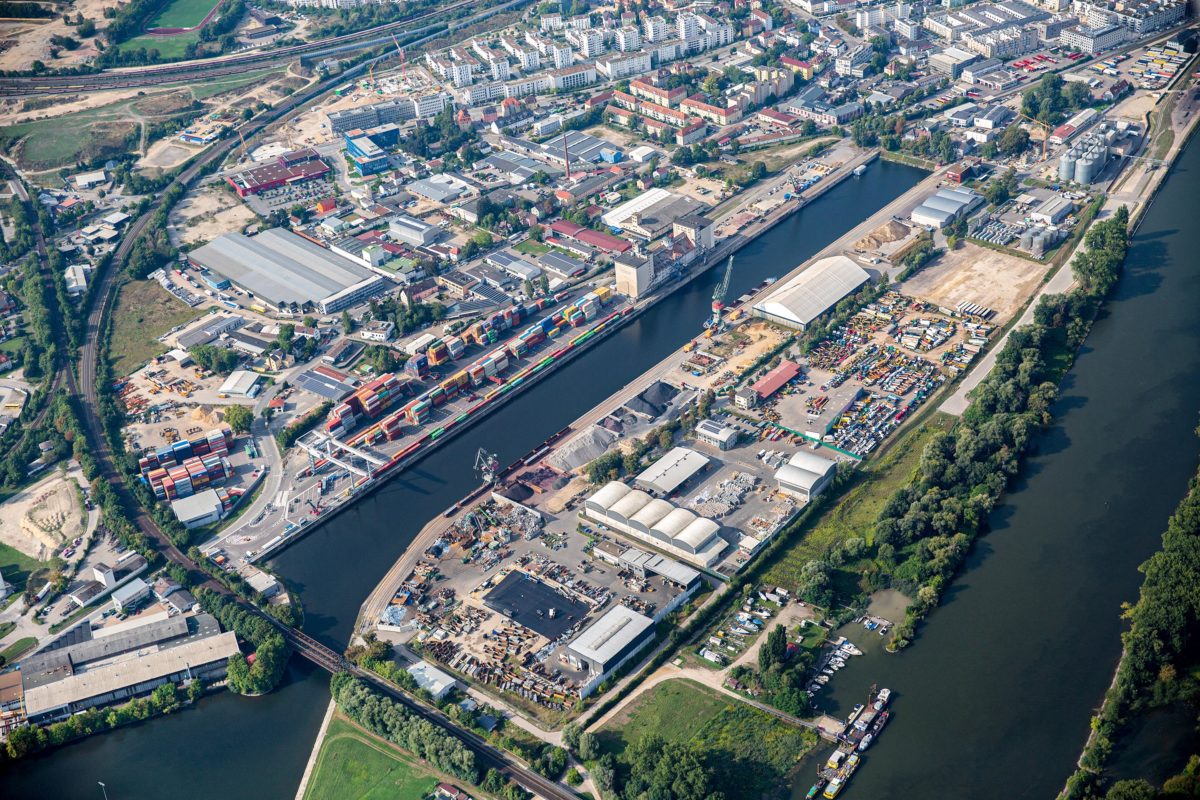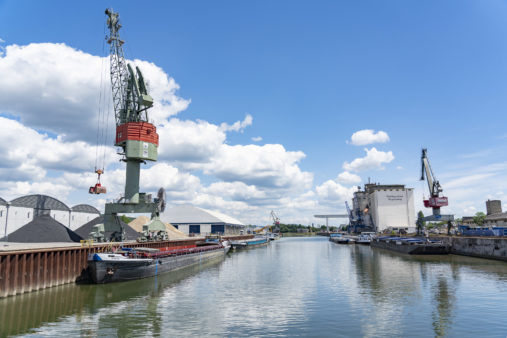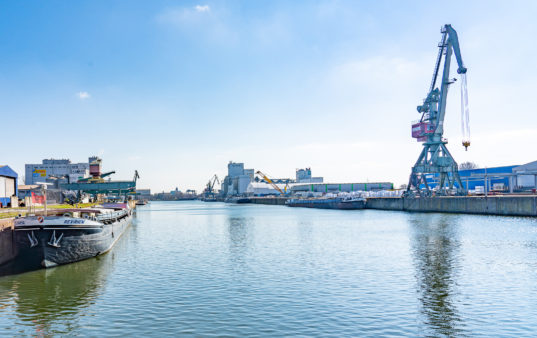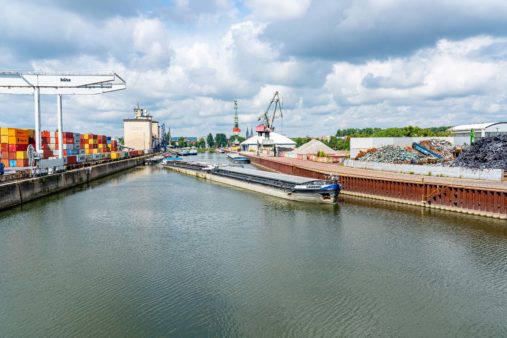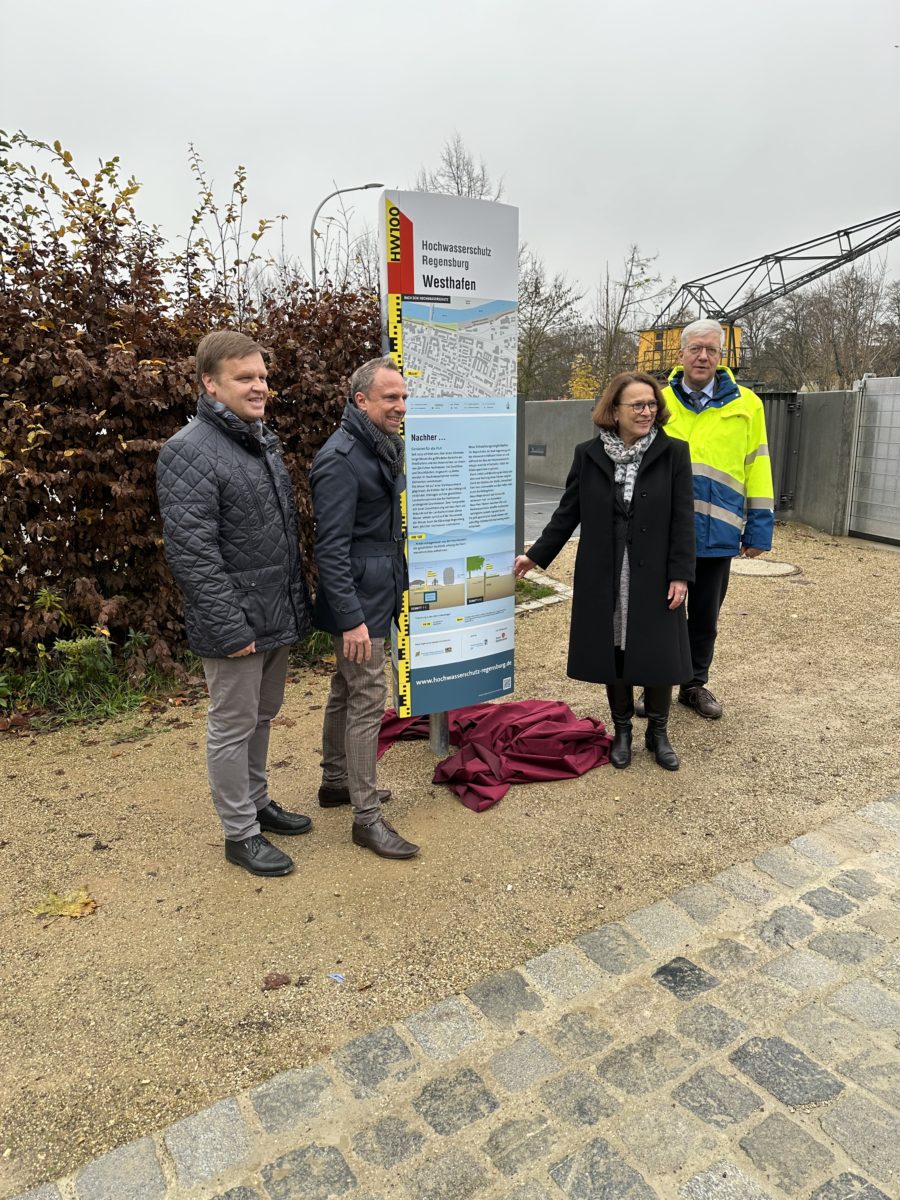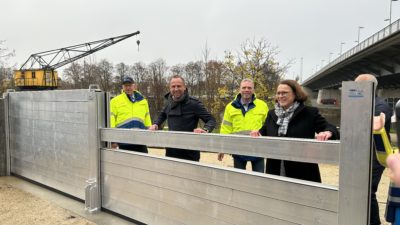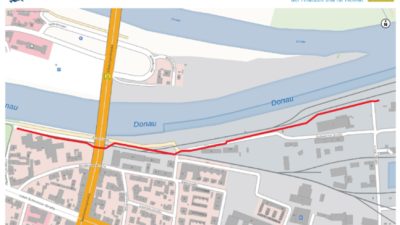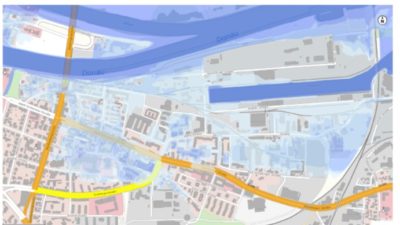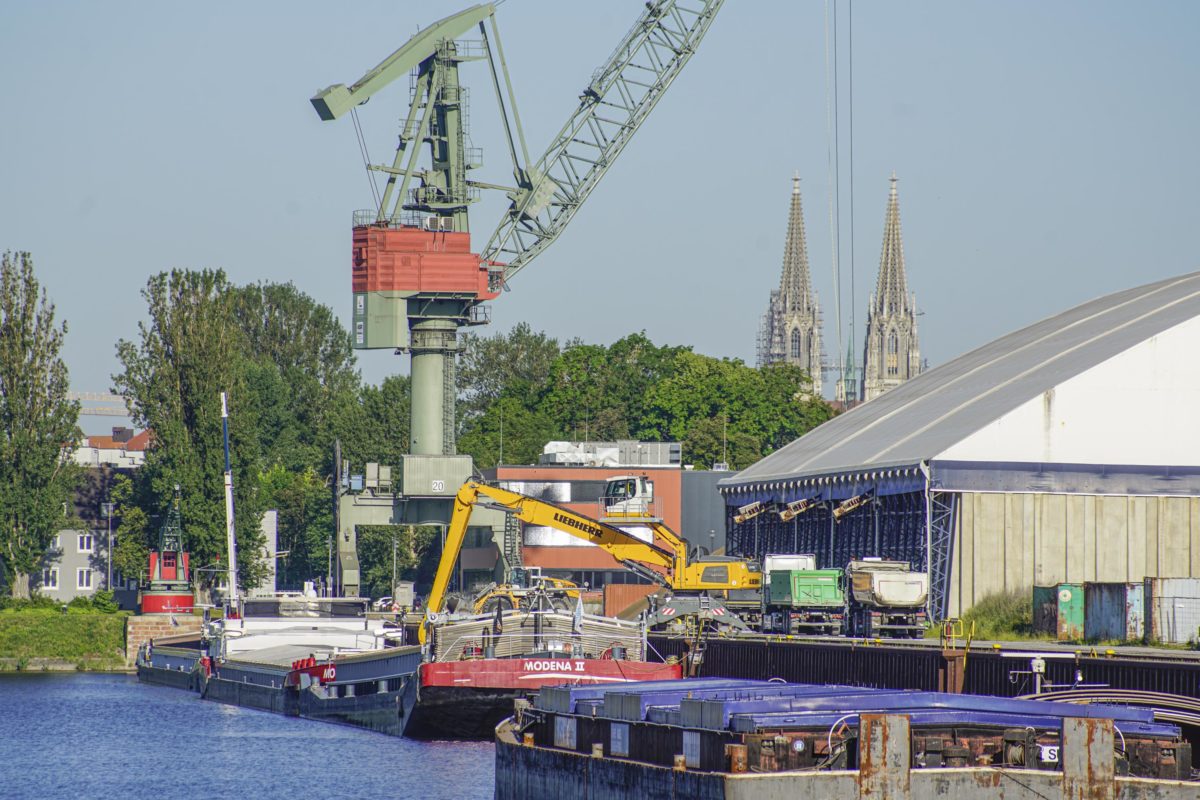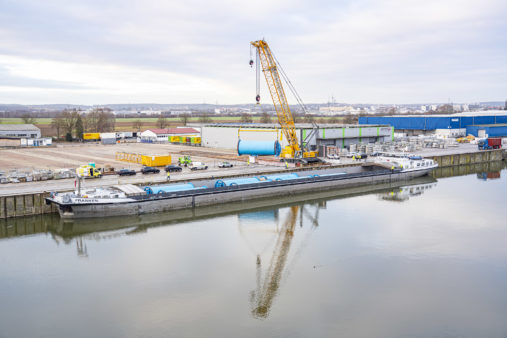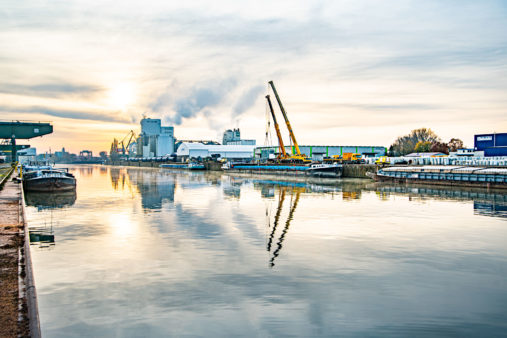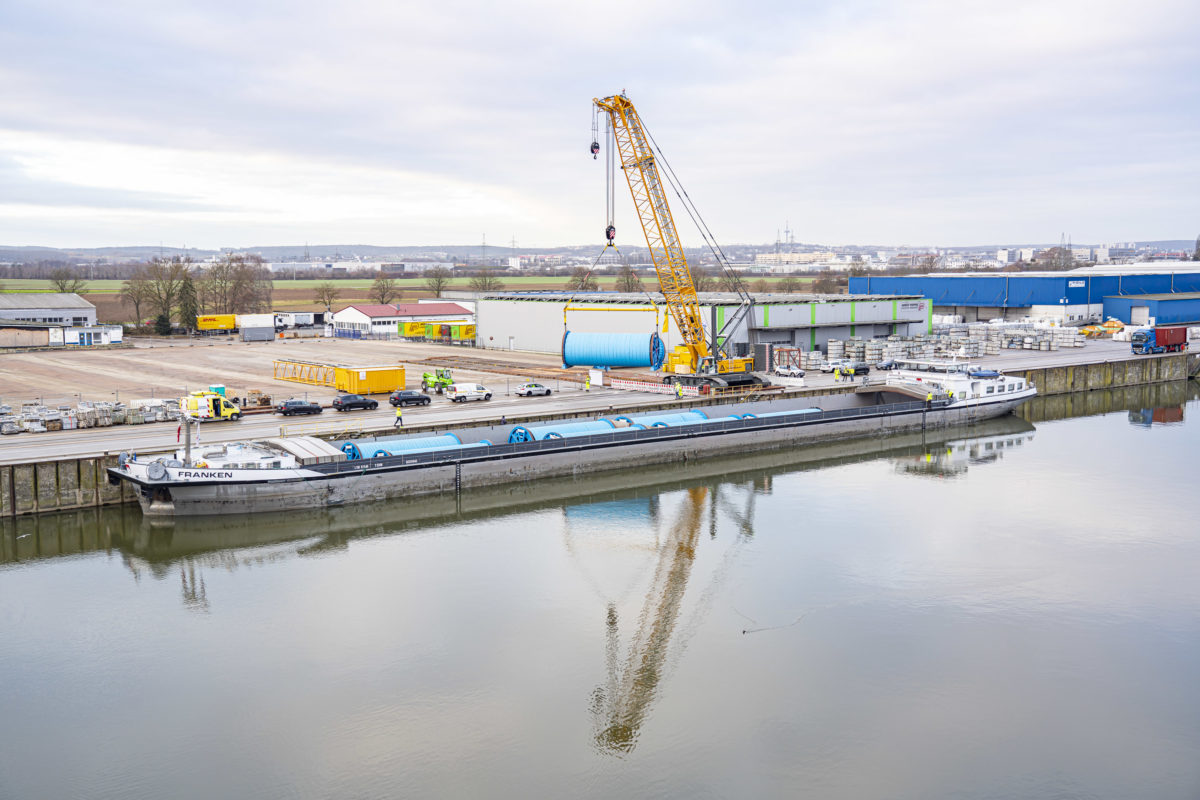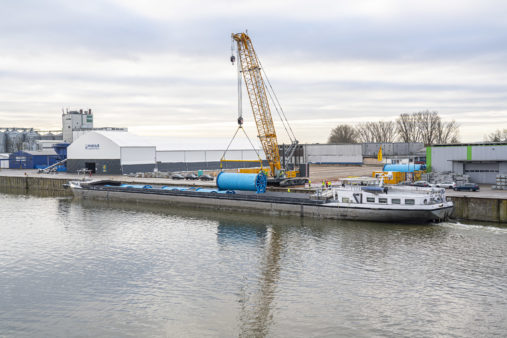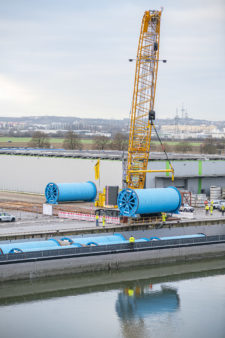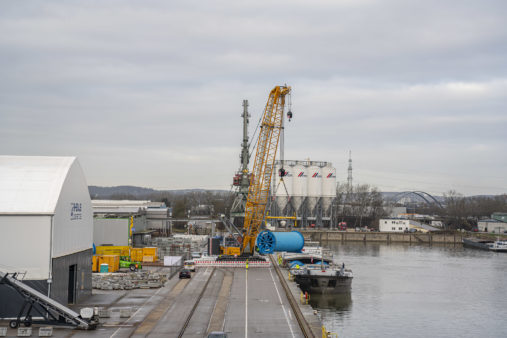18 March 2022 | Regensburg
bayernhafen Regensburg – the cargo and freight hub for East Bavaria
bayernhafen Regensburg in 2021 financial year: 2.79 million tonnes of goods moved by inland waterway and rail, 95% of the previous year’s volume; Combined Transport throughput up 20.6%; bayernhafen invests around € 2.4 million
Regensburg, 17 March 2021 – bayernhafen brings together a diverse range of goods and delivers the right infrastructure to meet the challenge of shifting long-distance traffic from the road networks to the two environmentally friendly transport modes of inland waterway and rail. In 2021, bayernhafen moved a total of 9.15 million tonnes of cargo and freight by inland waterway and rail at its six locations of Aschaffenburg, Bamberg, Nuremberg, Roth, Regensburg and Passau – a 4.6% increase on the previous year. This corresponds to around 535,000 fewer truck journeys.
In 2021, 2.79 million tonnes of goods were moved by inland waterway and rail at bayernhafen Regensburg, amounting to around 95% of the volume handled in the previous year.
“
Our inland ports and the infrastructure they provide ensure the reliable supply of goods to the region as well as the shift to the more environmentally friendly transport modes of inland waterway and rail.
Joachim Zimmernann,
Chief Executive Officer of bayernhafen
2021 million tonnes of goods were moved by rail in 2021, an increase of 8,6% on the previous year. Inland waterway handling stood at 1.303 million tonnes in Regensburg, the leading port in the whole of Bavaria for water-borne cargo & freight transport. This is 16.1% less than in the previous year and was primarily due to the fact that the good water levels on the Danube in comparison to previous years meant that there was very little need for lightering services (transferring cargo from barge to barge) for inter-regional ship transport at the two Danube ports of Regensburg and Passau.
There was marked growth in Combined Transport, which increased 20.6% on the previous year. In 2021, throughput amounted to 99,047 TEU (twenty foot equivalent unit). In addition to containers for seaport-hinterland traffic, a rise was recorded in swap bodies and semi-trailers for continental cargo and freight transport – a segment with further potential for growth. The expansion of the container terminal will provide a further boost to Combined Transport. The transport of semi-trailers and swap bodies has its own terminal, the Trailer Port.
The lion’s share of the shipping tonnage was made up of agricultural products, followed by metal products, ores and construction materials. Additionally, high-value heavy-lift goods, such as transformers, were also loaded onto barge at Regensburg to begin their journeys to markets around the world.
Rail freight in 2019 chiefly comprised containers and construction materials. For instance, the supply of heating oil for households and fuels for service stations runs via the VARO tank farm in bayernhafen Regensburg.
“At each of the regions in which we operate we act as a hub for the import and export of goods and are a driver of the regional economy. Our inland ports and the infrastructure they provide ensure the reliable supply of goods to the region as well as the shift to the more environmentally friendly transport modes of inland waterway and rail,” says Joachim Zimmermann, the Chief Executive Officer of bayernhafen. “This requires investment in trimodal port infrastructure and the concentration of logistics companies at the ports. That is why we must emphatically reject the idea of restricting functioning port land through changes of use in the surrounding areas, or using port land for other purposes on a larger scale. In the spirit of mutual consideration, any existing restrictions need to be minimized.”
It is currently not possible for bayernhafen to estimate the extent of the impact the war in Ukraine will have on the economy and hence on the logistics sector and international supply chains, whether on container traffic, agricultural produce or the supply of raw material for industry.
“
“Only through the re-purposing of existing land and the consolidation of vacated logistics sites can large sites still be allocated to special logistics projects.
Andrea Betz,
Head of Real Estate Business at bayernhafen Regensburg
A hub in the transition to cleaner energy
Since January 2022 cable reels are being transported to Regensburg via inland waterway to be used for the SuedOstLink project, which will supply Bavaria with electricity from wind energy generated in the north and east of Germany. The reels, which were produced near Paris, each hold around 1.75 km of underground cable and weigh up to 80 tonnes. A tracked crane operated by the bayernhafen-based crane specialist, Schmidbauer, offloads the reels at the heavy-lift handling quay. The project is being overseen in Bavaria by the transmission system operator, TenneT. It was possible to store the cable reels in at bayernhafen Regensburg thanks to the regeneration of an existing logistics site.
This is a timely example of how bayernhafen, in its role as site architect, manages its commercial sites through the recycling of existing land rather than the consumption of new land. “Only through the re-purposing of existing land and the consolidation of vacated logistics sites can large sites still be allocated to special logistics projects,” says Andrea Betz, Head of Real Estate Business at bayernhafen Regensburg.
With an eye on the transition to cleaner transport and energy, Stefan Ring, Head of Technology and Operations at bayernhafen Regensburg adds: “When we purchase new vehicles and machines, we always strive to source them on the basis of the latest powertrain technologies, the best emissions standards, and the highest energy efficiency.” For example, since 2021, the port masters uses electric vehicles to drive around the port and the charging infrastructure for plug-in-hybrid and electric vehicles is being expanded.
“
When we purchase new vehicles and machines, we always strive to source them on the basis of the latest powertrain technologies, the best emissions standards, and the highest energy efficiency.
Stefan Ring, Head of Technology and Operations at bayernhafen Regensburg
In 2021, bayernhafen continued the high level of investment it had made over the previous years, investing around € 2.4 million in Regensburg in the redevelopment of its commercial sites and port infrastructure. The investment earmarked for 2022 will reach the level of the previous years.
Boost for biodiversity through eco-account
bayernhafen maintains an eco-account for further construction developments. This account enables bayernhafen to implement the requisite biodiversity offsetting measures in advance and maintain a reserve for future use. The areas are created in sections at a dedicated site of around 16 ha located between Äußere Wiener Straße and the southern bank of the Danube.
Renaturation measures are carried out on suitable areas, such as through the transformation of land previously used for agriculture into alluvial woodland and extensive grassland areas. In future planning permission procedures, eco-account sites can be re-purposed as biodiversity offsetting and ecological compensation areas.
This combination of land and infrastructure makes bayernhafen Regensburg a strong anchor point and a major hub for the exchange of goods for the East Bavarian economy. The key prerequisite for this is the clear demarcation between port and residential areas to ensure good neighbourhood relations. The ongoing zoning plan procedures for the west port / oil port involve achieving legal clarity and planning reliability out of a cluster of historically conflicting interests – for the benefit of both the customers of the port and for its neighbours.
